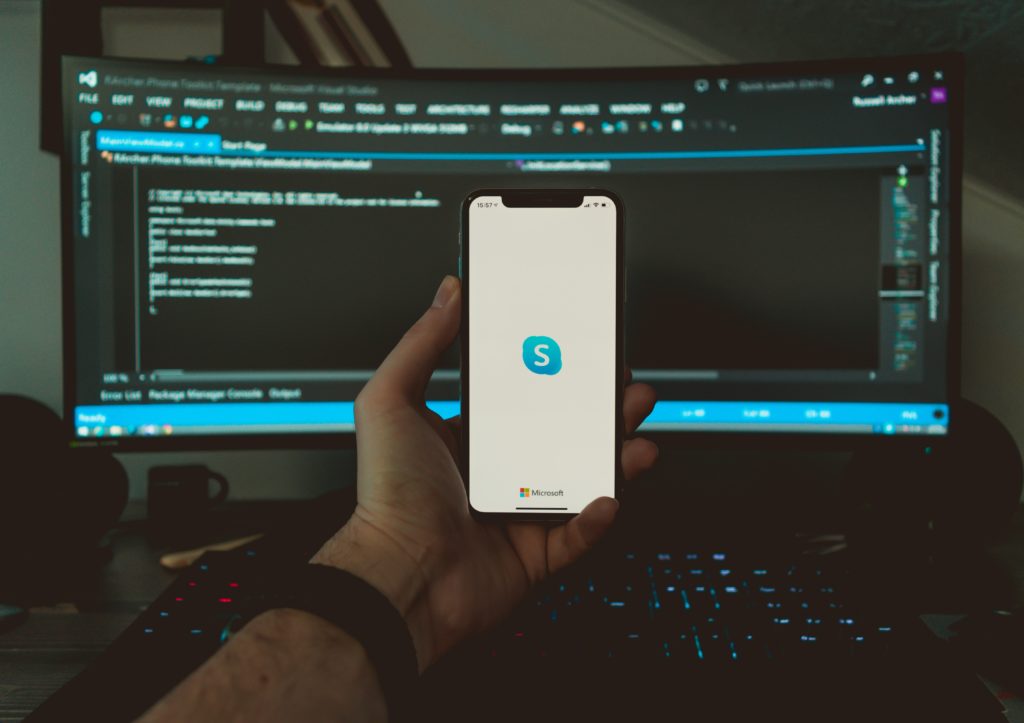If there’s anything businesses can learn from the current pandemic, it’s to ensure that we are able – at any given time – to manage all our processes remotely. And this includes welcoming new staff onboard, without the usual face-to-face meeting. Whether you’re on enforced lockdown or have an organization that manages teams of staff remotely, there is no better time to ensure you have an efficient remote onboarding process in operation.
Onboarding is a significant part of the employee lifecycle. It allows the employee to learn more about their new workplace, and it enables the organization to wow the new recruit. Providing your workers with an efficient onboarding program has been proven to reduce retention and increase employee engagement significantly. When an employee feels supported, cared for, and sufficiently trained up, they are more likely to work better, be more productive, and feel more satisfied with their job. It definitely isn’t a step you can afford to miss when your operations are adapting to the corona pandemic.
Communicating with staff during COVID-19
The idea of starting a new job brings up visions of first-day nerves and guided tours of the office. But for many new beginners, particularly in the current period, it starts with a walk to their home desk and the opening up of their laptops. Traditionally, onboarding is usually designed to be face-to-face: meeting colleagues, going for team lunches, and being given a first-hand overview of the business. After all, what better way to start a job than to shake hands, chat over a coffee, and meet new colleagues? So, with more jobs being based at home, can remote onboarding ever emulate traditional onboarding?
How possible is effective remote onboarding?

For many, having a physical presence in the workplace isn’t possible. With the current pandemic lockdown, restrictions on movement and social distancing are raising issues: how do you offer the best possible experience for new employees when entire countries are on lockdown? But despite the current fear and anxiety, it is possible to provide your people with a warm welcome and a suitable introduction to your company without ever meeting them in person. Granting remote beginners the same amount of care and support in their first few weeks as they would face-to-face just needs to be done a little differently.
How do you offer the best possible experience for new employees when the world has been turned on its head?
Right now there are plenty of organizations that have been doing it successfully for years — those with employees working in other countries, or those whose entire workforces online. These same companies boast high retention rates, employee happiness scores, and productivity levels, proving remote onboarding can not only be possible but very successful.
Now more than ever, we need to find ways to make the all-important beginning of our employees’ journeys as productive and beneficial as possible. Luckily, there are many ways to welcome new employees to the office, even if that office happens to be a home-office. This is the time to make sure your new starters are given the same amount of help and attention as office-based workers.
How important is onboarding for remote workers?

Is it that important to onboard people who work from home? If we never meet them, and they are not part of office life, what benefits does the process have?
Employees working from home are the group who need onboarding most. Without daily visits to the office, and face-to-face conversations with colleagues, onboarding provides the platform necessary for these workers to embed themselves into the fabric of the organization.
Employees working from home are the group who need onboarding most.
In the current climate of lockdown and isolation, it has never been more critical to ensure new employees feel welcomed, supported, and reassured.
Onboarding not only provides training and introduction to staff members, but it also allows the starter to become accustomed to the culture, ethos, and values of the organization. Remote workers can suffer a disconnect from the central hub of the business. With onboarding, this can be dramatically reduced by building rapport with team members, opening up channels of communication, and holding regular one-to-ones.
Communicating with staff during COVID-19
Fortunately, we live in a time where it has never been easier to work from home. With the digital workplace, most office-based roles can carry on seamlessly. However, in order for people joining the business to achieve success, a well-planned remote onboarding process is integral.
How to build a successful onboarding platform on your intranet
Your company intranet is the ideal place to host your onboarding platform. It provides all the features – blogging, contacts, forums, video, and communication tools that allow you to build up an area in which to welcome your beginners. And of course, no matter where your employees are, they can access the company intranet whether they’re in offices, on the road, or working remotely.
Intranets are invaluable for a dispersed workforce, connecting everyone, and allowing them to be informed with the latest company updates, communicate with their colleagues, and share knowledge. It is a lifeline for workers who are at home, whether they are close by or in a different country.
In the current climate of lockdown and isolation, it has never been more critical to ensure new employees feel welcomed, supported, and reassured.
For onboarders during the current COVID-19 pandemic, aside from learning the role, an intranet is vital for guidance on how to work safely, and to provide updates from leadership. Information can be displayed on the platform informing workers on how to report any signs of illness, how to book time off and find out all the steps the organization is taking to operate safely within the confines of the crisis.
Some of the digital tools integral to remote onboarding

What’s more, an intranet can have an array of integrations that complement remote working. It’s important to remember that some workers may not be familiar with these apps, and therefore appropriate training should be provided in the first week.
Video
One of the most effective onboarding tools used for remote workers is video. For a number of reasons: it’s an engaging format, it can shrink a complicated concept into a digestible nutshell, and it can be used both on desktop or mobile. With remote workers, video is one of the most used tools in their kit. Whether you’re in a crisis lockdown, or simply in another country, internal communications videos are incredibly effective at explaining and clarifying information, processes, and aspects of the role. Hosting these videos on your company intranet allows users to view them in a central, accessible place.
Communication tools
While working from home lacks those valuable face-to-face introductions and conversations, the wide range of digital tools available makes communication from different locations more viable than ever before. While video is integral to a lot of connecting with colleagues, there are other communication tools that work well with keeping in touch. Services like Slack and Microsoft Teams allow casual chat among team members. Colleagues can share gifs, talk about weekend plans, send videos. Of course, this isn’t strictly work-related, but it helps build up a better knowledge of colleagues and is important for cohesion and morale.
Gamification

While recruits are eager to learn, digesting and retaining information can be difficult, particularly when training is done in a tight timeframe. A way of helping to learn is to implement gamification processes – learning while playing. Onboarding a group of people can be enhanced by including competitions, challenges, and games into the learning aspect. By adding friendly competitiveness, you provide an engaging, fun learning experience.
Similarly, there are some more sober elements to onboarding that have to be read and understood. Protocols, regulations, and guidelines are an essential aspect of working in an organization. While these can be dry, being able to comprehend and remember them can be helped by holding quick challenges at the end, e.g.: ‘If you have a problem with your hardware or software, who do you contact? A, B, or C?’
Online learning
In the absence of any face-to-face interaction, the online learning environment has stepped up to the challenge. Training videos can be produced and uploaded into a learning center, ready to be watched by new team members. Creating modules allows training to be done at the learner’s pace and can be re-watched to recap on specific areas. And of course, this can be done anywhere at any time. Allowing this training area to be accessed on your mobile intranet app will increase the accessibility for your employees.
To encourage the completion of modules, badges can be earned, which are displayed on the user’s intranet profile. Make sure you allow the new recruit space in their work diaries to catch up on training. Building up their knowledge base is essential to their future success within your organization.
Tips on managing remote onboarding

At Interact, we’re carrying on as normally as possible throughout the COVID-19 crisis. We’re still recruiting, and a number of new hires have joined in the past few weeks. Fortunately, with colleagues working across the US and the UK, we have a lot of experience with onboarding staff remotely. We have well-established processes in place for our home workers, and managers are trained in helping these employees feel part of the organization, rather than cut off and isolated from company HQ. Some of these colleagues have shared their experiences and recommendations of remote onboarding new team members successfully. Their know-how is particularly useful to us in the current climate and may be of help to other businesses currently adjusting to remote operations.
1. Get all admin out of the way. If it’s possible to do pre-boarding, make sure all paperwork from HR and payroll has been completed. This allows the recruit to start work without any admin getting in the way.
Communicating with staff during COVID-19
2. Prepare their first day. It’s important to make sure your homeworker has everything they need to start their first day. Ensure that all equipment, software, and hardware are delivered ahead of time. It’s is also a good idea that email addresses, accounts, and permissions to online services are set up and that your beginner has a suitable place to work.
3. Don’t forget the swag. Sending your new employee some company swag is a really effective way of welcoming them onboard. A hoodie, stickers, a mug, stationery – it’s a small gesture that goes a long way in making the worker feel excited about their new role.
4. The human element. Remember to focus on the human aspect of your exchanges with your remote worker. While it’s essential to steer the onboarding process, it’s also important to get to know the worker, find out more about their life, their likes, and hobbies to build a strong working relationship. This rapport building helps people feel closer to their team and can improve performance and decrease retention.
5. Make sure everything is up to date. By their very mode of working, your remote worker will be more likely to find out things for themselves. With this in mind, it is crucial to ensure all processes, protocols, and guidelines are up to date and accessible. Your intranet should be the platform for once source of truth and a reliable source for the very latest information.
6. Rely on digital tools and features. During training, use all the tools at your disposal. In the absence of being next to your trainee, screen sharing and the ability to take control ensures a more hands-on approach and makes shadowing much easier.
Remember to focus on the human element of your exchanges with your remote worker.
7. Be conscious of concentration levels. Remember, your recruit is staring at a screen, so try and limit training sessions to an hour or under. Anything longer will be counterproductive. Short, sharp bursts of training are much better than prolonged periods of screen time.
8. Provide them with space to learn. Working remotely does require a certain degree of self-sufficiency. Many onboarding processes will mean that the recruit needs to manage a lot of their own learning. Make sure you give the time for them to do this, but also provide sessions to address what has been learned and identify any knowledge gaps.
9. Schedule in some recap sessions. Provide your onboarder with some time to digest the information and training. It is recommended that you allow for some recap time, which enables the starter to go back and cover or ask questions on topics that they need help with. For recruits on a different time zone, it’s important to be conscious of their starting times and allocate these recap sessions at a time that suits both of you.
10. Team time is essential. Remote teams can be working in different locations, in different time zones. If possible, hold regular team video calls. This is, of course, vital during onboarding, when you need to introduce your new team member. But it also strengthens team relationships, and while these sessions can tackle any problems or issues that arise, it is also an excellent opportunity to have a friendly chat with one another.
11. Get to know the organization. It’s essential to give your worker a bird’s eye view of the organization to help them understand what every department does. Your onboarding time should include video chats with key members of each area of the business. This is time for them to introduce themselves and explain the significance of what they do.
Onboarding remote workers in a time of crisis

COVID-19 has had a devastating impact on businesses across the world. For those fortunate to escape the full impact of the pandemic, it is important to carry on as safely as possible. And this means keeping as many workers as possible at home, staying in contact, and keeping them updated and informed. If you are still recruiting, your onboarding solutions have never been more important.
It is clear that more than ever those who work remotely, whether by choice or through circumstance, need the support and succor of the company behind them. Leadership, good management, and camaraderie are part of the introductory process and are essential in times like this.
The world has been turned upside down, and your organization is possibly still finding its feet. Your employees need guidance and reassurance at this time, and this begins with helping those joining you through an employee onboarding solution. By setting your workers up with the equipment, training, and support of their team, you’re helping to lay strong foundations that will retain your top talent and strengthen your business further.



